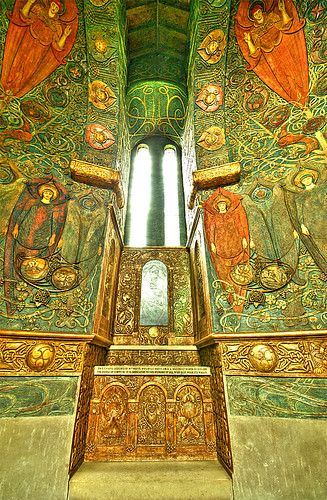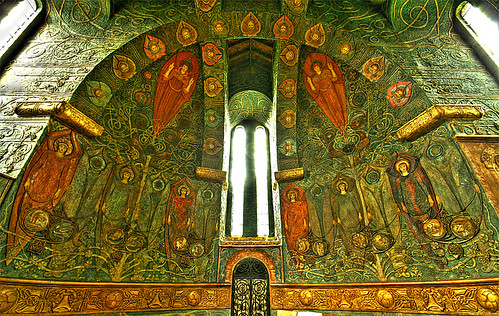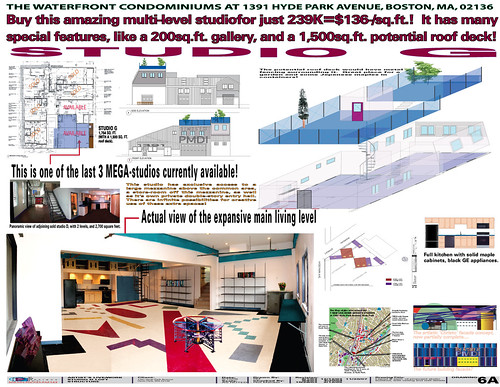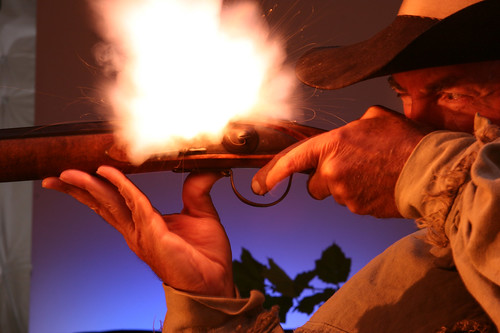Victoria Studio
Image by myvirtuallady
www.myvirtuallady.com - Sexy, stunning, and sensual, Victoria ignited a flame that burned through the digital art community. Victoria Studio is your perfect pin-up Girl posing in this studio ambience. www.printfection.com/myvirtualladydigitalart
Watts Chapel - Compton - Surrey
Image by nick.garrod
Artizen HDR
All information taken from www.wattsgallery.org.uk/
Designed and built by Mary Watts, the Chapel is a unique fusion of art nouveau, Celtic, Romanesque and Egyptian influence with Mary's own original style.
As followers of the Home Arts and Industries Association, set up by Earl Brownlow in 1885 to encourage handicrafts among the lower classes, the Chapel was the Watts's contribution to this characteristically Victorian preoccupation with social improvement through creative enlightenment. Mary passionately believed that anyone with a real interest and enthusiasm could be taught how to produce beautiful decoration, if in the process it kept them away from the 'gin palaces' of Guildford, this was surely a good thing. With this belief firmly in mind she encouraged all from the village, whatever their social status, up to their house Limnerslease for instruction in clay modelling.
The clay came from a seam that was discovered in the grounds of their house, apparently not unusual for this area. Taking this as a sign, Mary embarked upon the project with her usual determination, writing to the Parish Council in 1895 offering to build a new cemetery chapel, as the old graveyard in the village church of St Nicholas was full to capacity.
Her offer was accepted. As early as 1888 concerned parishioners had discussed the problem of space and plans were therefore already underway for land to be purchased from the Loseley Estate. Mary had produced her clay model of the new chapel by August 1895 and later that year the sale of land from William More-Molyneux was agreed.
The first clay modelling class took place at Limnerslease on Thursday 14 November 1895. All were welcome, from the local lady of the manor to her farm boys, as long as there was a genuine desire to learn, Mary was happy.
After a few weeks learning how to handle clay and modelling simple decorations, they would begin to make clay tiles from the plates Mrs Watts had prepared.
The design itself is an amalgamation of inspiration, every aspect having symbolic meaning. The Circle of Eternity with its intersecting Cross of Faith is from pre-historic times and symbolises the power of redeeming love stretching to the four quarters of the earth. The dome is traditionally seen as emblematic of heaven, the four panels on the exterior containing friezes symbolising the Spirit of Hope, the Spirit of Truth, the Spirit of Love and the Spirit of Light.
The exterior of the Chapel was finished in 1898, but the decoration of the interior took a while longer. Mary took the most talented of her craftsmen and women and together they created the stunning gesso interior, finally completing it in 1904.
The Chapel is Parish property and is open to the public daily.
George Frederic Watts, OM (23 February 1817 – 1 July 1904; sometimes spelt "George Frederick Watts") was a popular English Victorian painter and sculptor associated with the Symbolist movement.
Watts became famous in his lifetime for his allegorical works, such as Hope (see image) and Love and Life. These paintings were intended to form part of an epic symbolic cycle called the "House of Life", in which the emotions and aspirations of life would all be represented in a universal symbolic language.
Watts was born in Marylebone, London, the delicate son of a poor piano-maker. He showed promise very early, learning sculpture from the age of 10 with William Behnes and enroling as a student at the Royal Academy at the age of 18. He came to the public eye with a drawing entitled Caractacus, which was entered for a competition to design murals for the new Houses of Parliament at Westminster in 1843. Watts won a first prize in the competition, which was intended to promote narrative paintings on patriotic subjects, appropriate to the nation's legislature. In the end Watts made little contribution to the Westminster decorations, but from it he conceived his vision of a building covered with murals representing the spiritual and social evolution of humanity.
Visiting Italy in the mid-1840s, Watts was inspired by Michelangelo's Sistine Chapel and Giotto's Scrovegni Chapel, but back in Britain he was unable to obtain a building in which to carry out his plan. In consequence most of his major works are conventional oil paintings, some of which were intended as studies for the House of Life.
In the 1860s, Watts's work shows the influence of Rossetti, often emphasising sensuous pleasure and rich color. Among these paintings is a portrait of his young wife, the actress Ellen Terry, who was nearly 30 years his junior – just seven days short of her 17th birthday when they married on 20 February 1864. When she eloped with another man after less than a year of marriage, Watts was obliged to divorce her (though this process was not completed until 1877). In 1886 at the age of 69 he re-married, to Mary Fraser-Tytler, a Scottish designer and potter, then aged 36.
Watts's association with Rossetti and the Aesthetic movement altered during the 1870s, as his work increasingly combined Classical traditions with a deliberately agitated and troubled surface, in order to suggest the dynamic energies of life and evolution, as well as the tentative and transitory qualities of life. These works formed part of a revised version of the house of life, influenced by the ideas of Max Müller, the founder of comparative religion. Watts hoped to trace the evolving "mythologies of the races [of the world]" in a grand synthesis of spiritual ideas with modern science, especially Darwinian evolution.
In 1881, having moved to London, he set up a studio at his home at Little Holland House in Kensington, and his epic paintings were exhibited in Whitechapel by his friend and social reformer Canon Samuel Barnett. Refusing the baronetcy offered him by Queen Victoria, he later moved to a house, "Limnerslease", near Compton, south of Guildford, in Surrey.
After moving into "Limnerslease" in 1891, Watts and his wife Mary arranged the building of the Watts Gallery nearby, a museum dedicated to his work – the first (and now the only) purpose-built gallery in Britain devoted to a single artist – which opened in April 1904, shortly before his death. Watts's wife Mary designed the nearby Mortuary Chapel. Many of his paintings are also held at the Tate Gallery – he donated 18 of his symbolic paintings to the Tate in 1897, and three more in 1900. He was elected as an Academician to the Royal Academy in 1867 and accepted the Order of Merit in 1902.
In his late paintings, Watts's creative aspirations mutate into mystical images such as The Sower of the Systems, in which Watts seems to anticipate abstract art. This painting depicts God as a barely visible shape in an energised pattern of stars and nebulae. Some of Watts's other late works also seem to anticipate the paintings of Picasso's Blue Period.
Watts was also admired as a portrait painter. His portraits were of the most important men and women of the day, intended to form a "House of Fame". Many of these are now in the collection of the National Portrait Gallery – 17 were donated in 1895, with more than 30 more added subsequently. In his portraits Watts sought to create a tension between disciplined stability and the power of action. He was also notable for emphasising the signs of strain and wear on his sitter's faces. Sitters included Charles Dilke, Thomas Carlyle and William Morris.
During his last years Watts also turned to sculpture. His most famous work, the large bronze statue Physical Energy, depicts a naked man on horseback shielding his eyes from the sun as he looks ahead of him. It was originally intended to be dedicated to Muhammad, Attila, Tamerlane and Genghis Khan, thought by Watts to epitomise the raw energetic will to power. A cast was placed at Rhodes Memorial in Cape Town, South Africa honouring the grandiose imperial vision of Cecil Rhodes. Watts's essay "Our Race as Pioneers" indicates his support for imperialism, which he believed to be a progressive force. There is also a casting of this work in London's Kensington Gardens, overlooking the north-west side of the Serpentine.
Watts Chapel - Compton - Surrey
Image by nick.garrod
Artizen HDR
All information taken from www.wattsgallery.org.uk/
Designed and built by Mary Watts, the Chapel is a unique fusion of art nouveau, Celtic, Romanesque and Egyptian influence with Mary's own original style.
As followers of the Home Arts and Industries Association, set up by Earl Brownlow in 1885 to encourage handicrafts among the lower classes, the Chapel was the Watts's contribution to this characteristically Victorian preoccupation with social improvement through creative enlightenment. Mary passionately believed that anyone with a real interest and enthusiasm could be taught how to produce beautiful decoration, if in the process it kept them away from the 'gin palaces' of Guildford, this was surely a good thing. With this belief firmly in mind she encouraged all from the village, whatever their social status, up to their house Limnerslease for instruction in clay modelling.
The clay came from a seam that was discovered in the grounds of their house, apparently not unusual for this area. Taking this as a sign, Mary embarked upon the project with her usual determination, writing to the Parish Council in 1895 offering to build a new cemetery chapel, as the old graveyard in the village church of St Nicholas was full to capacity.
Her offer was accepted. As early as 1888 concerned parishioners had discussed the problem of space and plans were therefore already underway for land to be purchased from the Loseley Estate. Mary had produced her clay model of the new chapel by August 1895 and later that year the sale of land from William More-Molyneux was agreed.
The first clay modelling class took place at Limnerslease on Thursday 14 November 1895. All were welcome, from the local lady of the manor to her farm boys, as long as there was a genuine desire to learn, Mary was happy.
After a few weeks learning how to handle clay and modelling simple decorations, they would begin to make clay tiles from the plates Mrs Watts had prepared.
The design itself is an amalgamation of inspiration, every aspect having symbolic meaning. The Circle of Eternity with its intersecting Cross of Faith is from pre-historic times and symbolises the power of redeeming love stretching to the four quarters of the earth. The dome is traditionally seen as emblematic of heaven, the four panels on the exterior containing friezes symbolising the Spirit of Hope, the Spirit of Truth, the Spirit of Love and the Spirit of Light.
The exterior of the Chapel was finished in 1898, but the decoration of the interior took a while longer. Mary took the most talented of her craftsmen and women and together they created the stunning gesso interior, finally completing it in 1904.
The Chapel is Parish property and is open to the public daily.
George Frederic Watts, OM (23 February 1817 – 1 July 1904; sometimes spelt "George Frederick Watts") was a popular English Victorian painter and sculptor associated with the Symbolist movement.
Watts became famous in his lifetime for his allegorical works, such as Hope (see image) and Love and Life. These paintings were intended to form part of an epic symbolic cycle called the "House of Life", in which the emotions and aspirations of life would all be represented in a universal symbolic language.
Watts was born in Marylebone, London, the delicate son of a poor piano-maker. He showed promise very early, learning sculpture from the age of 10 with William Behnes and enroling as a student at the Royal Academy at the age of 18. He came to the public eye with a drawing entitled Caractacus, which was entered for a competition to design murals for the new Houses of Parliament at Westminster in 1843. Watts won a first prize in the competition, which was intended to promote narrative paintings on patriotic subjects, appropriate to the nation's legislature. In the end Watts made little contribution to the Westminster decorations, but from it he conceived his vision of a building covered with murals representing the spiritual and social evolution of humanity.
Visiting Italy in the mid-1840s, Watts was inspired by Michelangelo's Sistine Chapel and Giotto's Scrovegni Chapel, but back in Britain he was unable to obtain a building in which to carry out his plan. In consequence most of his major works are conventional oil paintings, some of which were intended as studies for the House of Life.
In the 1860s, Watts's work shows the influence of Rossetti, often emphasising sensuous pleasure and rich color. Among these paintings is a portrait of his young wife, the actress Ellen Terry, who was nearly 30 years his junior – just seven days short of her 17th birthday when they married on 20 February 1864. When she eloped with another man after less than a year of marriage, Watts was obliged to divorce her (though this process was not completed until 1877). In 1886 at the age of 69 he re-married, to Mary Fraser-Tytler, a Scottish designer and potter, then aged 36.
Watts's association with Rossetti and the Aesthetic movement altered during the 1870s, as his work increasingly combined Classical traditions with a deliberately agitated and troubled surface, in order to suggest the dynamic energies of life and evolution, as well as the tentative and transitory qualities of life. These works formed part of a revised version of the house of life, influenced by the ideas of Max Müller, the founder of comparative religion. Watts hoped to trace the evolving "mythologies of the races [of the world]" in a grand synthesis of spiritual ideas with modern science, especially Darwinian evolution.
In 1881, having moved to London, he set up a studio at his home at Little Holland House in Kensington, and his epic paintings were exhibited in Whitechapel by his friend and social reformer Canon Samuel Barnett. Refusing the baronetcy offered him by Queen Victoria, he later moved to a house, "Limnerslease", near Compton, south of Guildford, in Surrey.
After moving into "Limnerslease" in 1891, Watts and his wife Mary arranged the building of the Watts Gallery nearby, a museum dedicated to his work – the first (and now the only) purpose-built gallery in Britain devoted to a single artist – which opened in April 1904, shortly before his death. Watts's wife Mary designed the nearby Mortuary Chapel. Many of his paintings are also held at the Tate Gallery – he donated 18 of his symbolic paintings to the Tate in 1897, and three more in 1900. He was elected as an Academician to the Royal Academy in 1867 and accepted the Order of Merit in 1902.
In his late paintings, Watts's creative aspirations mutate into mystical images such as The Sower of the Systems, in which Watts seems to anticipate abstract art. This painting depicts God as a barely visible shape in an energised pattern of stars and nebulae. Some of Watts's other late works also seem to anticipate the paintings of Picasso's Blue Period.
Watts was also admired as a portrait painter. His portraits were of the most important men and women of the day, intended to form a "House of Fame". Many of these are now in the collection of the National Portrait Gallery – 17 were donated in 1895, with more than 30 more added subsequently. In his portraits Watts sought to create a tension between disciplined stability and the power of action. He was also notable for emphasising the signs of strain and wear on his sitter's faces. Sitters included Charles Dilke, Thomas Carlyle and William Morris.
During his last years Watts also turned to sculpture. His most famous work, the large bronze statue Physical Energy, depicts a naked man on horseback shielding his eyes from the sun as he looks ahead of him. It was originally intended to be dedicated to Muhammad, Attila, Tamerlane and Genghis Khan, thought by Watts to epitomise the raw energetic will to power. A cast was placed at Rhodes Memorial in Cape Town, South Africa honouring the grandiose imperial vision of Cecil Rhodes. Watts's essay "Our Race as Pioneers" indicates his support for imperialism, which he believed to be a progressive force. There is also a casting of this work in London's Kensington Gardens, overlooking the north-west side of the Serpentine.
Studio G
Image by Phil Manker
This Studio G is a great space on the upper level of this artsy new building, this loft has 1,754 wide open sq.ft., with a lot of windows looking out on a beautifully restored piece of Boston's Urban Wild, Mother Brook(tributary of the Neponset River), and private access to a huge roofdeck (up to 1,100 sq.ft.) via a spiral stairway and rooftop entryway. Full brand new GE kitchen and bath. It also has exclusive access to a great second level gallery above the common area, and huge storage room. Artsy tile floors, tons of natural light, big walk-in closets, brand new heating and air conditioning systems, and a large safe are other special features.
Amenities and safety systems include multiple phone jacks, multiple COMCAST internet connections, washer-dryer hookups, complete sprinkler system, intercom system, fire alarm system, deeded private parking space.
To arrange a showing, e-mail Phil Manker at philmanker@comcast.net. He can answer all your questions, and provide more detailed plans and drawings. And he is willing to negotiate the already incredibly reasonable 9,000- asking price of only 6- a square foot. This is as low as this amazing unit will ever go! Additional design ideas are available, as well, for free! You can also see this studio on ArtistLink, artspacefinder.
The building has a large common area, with a multi-level, 26'H, gallery space for exhibitions, events. Entrances are handicapped accessible.
Hyde Park is an attractive community, with great public train and bus transportation into downtown Boston in minutes, food stores, and restaurants. It is Mayor Menino's home town.
STUDIO IS AVAILABLE TO PURCHASE AT 9,000-
Design/ Production of ARTIST'S LIVE/WORK SPACES murals + furniture + exhibits + retail displays + signage + light fixtures + architectural details
philmanker@comcast.net
philmankerdesign.com/
Boston
617-696-0259
Workshop - musketfire
Image by kippbakr
In the summer of 2009, I held a series of studio photography workshops. In one of the last ones, a member (Marsha E.) brought her husband - along with his bag of authentic pioneer woodsman clothes, the offer of his services as model - and his fully functional flintlock rifle. O - WOW.
How could we refuse? After a brief discussion of what sort of photo-problem to solve, this is what we came up with.
The original problem I posed to the group: How do you work in the small studio space to show and do justice to an authentically dressed outdoorsman?
When he offered that he could also FIRE the flintlock, there was only one thing we could do! Make it appear as if he were about to bring home dinner at the end of the day!
We spent about 30 minutes setting up (see the production stills next to this in the stream). This is the first "acceptable" exposure I made - after which I stepped aside and let members of the group have their turn at timing and "photo-dancing". This shot is not retouched nor cropped (you can see the edge of the white seamless at left.)
In full historically-correct dress, our friend and pioneer re-en-actor, Chuck E., willingly reloaded his flintlock rifle to allow us this shot - shot after shot. In the brief time allotted that morning (only 9AM-noon), we'd designed the shot to appear as if it were sunset and explored the lighting requirements and possibilities.
While not yet a professional grade image, it still gave the group a viable idea of the "non-trivial" efforts it takes to assemble an illustrative studio shot. Thanks to all who helped pull this off - especially Michael M. and Steve O.
- Kipp
No comments:
Post a Comment